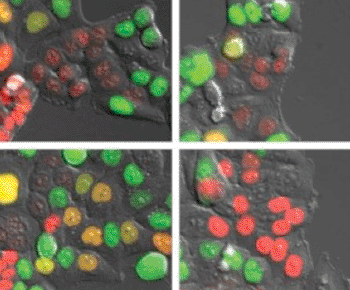Mutation That Blocks p53-Mediated DNA Repair Identified in Multiple Types of Cancer
By LabMedica International staff writers
Posted on 13 May 2013
A mutation in the PPM1D (protein phosphatase, Mg2+/Mn2+ dependent, 1D) gene results in production of a C-terminally truncated form of the protein Wip1, which is a stable inhibitor of the p53 tumor suppressor.Posted on 13 May 2013
The Wip1 protein encoded by the PPM1D gene is a member of the PP2C family of serine/threonine protein phosphatases. PP2C family members are known to be negative regulators of cell stress-response pathways. The expression of this gene is induced in a p53-dependent manner in response to various environmental stresses. While being induced by tumor suppressor protein p53, this phosphatase negatively regulates the activity of a p38 MAP kinase, through which it reduces the phosphorylation of p53, and in turn suppresses p53-mediated transcription and apoptosis. Wip1 thus mediates a feedback regulation of p38-p53 signaling that contributes to growth inhibition and the suppression of stress-induced apoptosis. The PPM1D gene is located in a chromosomal region known to be amplified in breast cancer.
Investigators at the Academy of Sciences of the Czech Republic (Prague) and The Netherlands Cancer Institute (Amsterdam) examined the role of mutated Wip1 in blocking the anticancer activity of p53 by analyzing samples from 1,000 patients with colorectal, breast, or ovarian cancer and from 450 cancer-free individuals. In addition, they analyzed human tumor cell lines that expressed functional p53.
Results published in the May 6, 2013, online edition of the Journal of Cell Biology demonstrated that mutant PPM1D acted as an oncogene in a subset of tumors that retained wild-type p53. A novel gain-of-function mutation in exon 6 of PPM1D resulted in the expression of C-terminally truncated Wip1. The truncated Wip1 was found to be more stable than the full-length protein, allowing cancer cells to suppress p53 and continue the cell cycle despite DNA damage.
Mutations in PPM1D were present not only in the tumors but also in other tissues of breast and colorectal cancer patients, indicating that they arise early in development or affect the germline.
“We have identified a new mechanism that could lead to inactivation of p53 in cells and inactivation of the DNA damage response,” said senior author Dr. Libor Macurek, head of the laboratory of cancer cell biology at the Academy of Sciences of the Czech Republic. “We suspect that PPM1D mutations could turn up in a variety of tumors. If so, targeting the short but overactive form of Wip1 could provide a new way to treat these cancers.”
Related Links:
Academy of Sciences of the Czech Republic
The Netherlands Cancer Institute
















